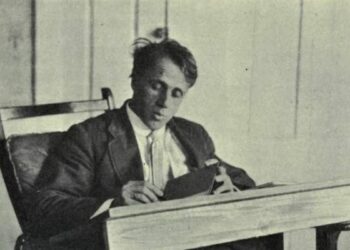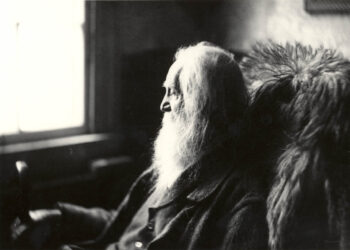Introduction
Break Of Day Summary And Themes By John Donne One of the most well-known poets of the English Renaissance, John Donne, is well-known for his intensely emotional and intellectually challenging poetry. His poetry frequently blends the personal with the philosophical as it examines issues of religion, love, death, and the human condition. Break of Day, one of his many well-known pieces, is a masterfully written meditation on the complexities of love and the inevitable nature of parting. The poem, which blends the spiritual and physical aspects of love, was written in the early 17th century and exhibits Donne’s trademark wit, cunning, and emotional depth.
Break of Day is a theatrical monologue in which the speaker—usually seen as Donne himself—reflects on his separation from his sweetheart at the crack of dawn. As the speaker is caught between the intensity of his love and his impending separation from his sweetheart, the title and imagery allude to the conflict between light and dark, a moment when the world changes from night to day.
Summary of Break of Day
Break of Day opens with the speaker considering the time of day when her partner is departing. The time is important since dawn signifies a period of separation as well as a fresh start. The speaker, who is incredibly in love, expresses a complicated range of feelings, including sadness, desire, and irritation, as the lover must leave. The speaker acknowledges the harsh facts of love, such as the unavoidable partings and the emotional toll they take, by using the tension between light and darkness.
The poem’s opening speaker draws attention to the lover’s forced departure due to the arrival of daylight. He discusses how love transcends the mundane and temporal limitations, in contrast to the natural rhythms of day and night, in a poetic and frequently humorous manner. For him, the dawn of the day signifies his separation from his partner and is more than just a physical occurrence. In a way, the day’s arrival becomes a metaphor for the inevitable separation that will occur when the lover has to depart.
Read more
Despite the sadness that the day brings, the speaker also expresses the depth of his love, suggesting that the love between the two of them is greater than the passage of time or the constraints of the physical world. He meditates on the power of love, asserting that it is an eternal force that transcends the fleeting constraints of the daily cycle of light and dark.
There is a tension throughout the poem between love as an ideal, transcendent force, and the reality of human life, which is governed by external forces such as time and space. The speaker contemplates the nature of love, reflecting on its complexities, joys, and inevitable disappointments. In the final lines of the poem, there is a sense of reluctant acceptance—though the lover must depart, the love they share will endure beyond the physical separation.

Themes in Break of Day
1. Separation and Loss
One of the central themes in Break of Day is the tension between love and separation. The poem opens with the speaker’s awareness that dawn is coming, and with it, the inevitability of his lover’s departure. While the separation is physical, the speaker’s emotional response to it is complex. There is a recognition of the pain that comes with being apart from someone who has become an integral part of one’s life. However, this theme of loss is not just about physical absence—it is also a meditation on the transient nature of time and love itself.
Through the imagery of dawn, Donne highlights the inevitable, recurring nature of separation. The lover’s departure is not a singular event but part of a cyclical pattern that mirrors the natural world’s transitions between day and night. This cycle reflects both the endurance of the lover’s absence and the resilience of love itself, suggesting that love may persist despite the separation.
2. The Transience of Time
The theme of time plays a significant role in Break of Day. Donne uses the breaking of day—when night gives way to light—as a metaphor for the passage of time and its effects on the speaker’s relationship. The rising of the sun is inevitable and inescapable, just as the passage of time is constant and unyielding. The lover’s departure marks a tangible representation of time’s passage, a reminder of the impermanence of physical presence and the inevitability of change.
Donne’s treatment of time is not merely about physical separation, but also about the ephemeral nature of human life. Time and its passing are central to the speaker’s reflections on love, reminding the reader that all relationships, no matter how deep, are subject to the ravages of time and circumstance. However, the poem also hints that love transcends time, implying that even as the physical presence of the lover fades with the dawn, love itself remains.
3. The Immortality of Love
Despite the inevitable separation in the poem, the speaker suggests that love itself is eternal. He speaks of a love that transcends time, distance, and separation. The lover’s departure is framed as something temporary and physical, while the emotional bond between the two remains steadfast and immortal. The poem’s insistence on love’s enduring nature is one of the key elements of Donne’s metaphysical poetry, which often grapples with the tension between the physical and the spiritual, the transient and the eternal.
In the context of Break of Day, the immortality of love is not merely an abstract concept. The speaker expresses confidence that, although the lover must depart, their connection will persist beyond the confines of time and space. This theme reinforces the idea that love, as a spiritual force, cannot be bound by the limitations of human existence. Donne’s use of the dawn as a metaphor for the passage of time emphasizes the resilience of love in the face of physical separation.
Read more
4. The Role of Light and Darkness
Light and darkness are prominent symbols in Break of Day. The dawning of the day symbolizes both a new beginning and a time of separation. The transition between night and day mirrors the emotional shift the speaker experiences as his lover must leave. While the coming of day brings the inevitable loss of the lover’s presence, it also serves as a reminder of the continual cycle of time, offering both a sense of renewal and a deep sense of melancholy.
The contrast between light and dark, life and death, also evokes a larger commentary on human existence. For Donne, the separation between the speaker and the lover is not merely physical but spiritual, a reflection of the larger tension between the earthly and the divine. The interplay of light and darkness becomes a powerful metaphor for the struggles between desire, love, and the ultimate separation that all human beings face.
5. Love’s Transcendence of the Physical World
In addition to its transcendence of time, love is also portrayed as something that rises above the limitations of the physical world. The speaker in Break of Day suggests that love, unlike the external forces of time and space, is a metaphysical force that cannot be broken by the separation of two bodies. Though the lover must depart, their love remains unscathed. This theme of transcendence speaks to Donne’s broader philosophical views on love and spirituality, where love is seen as an enduring, eternal force that connects people across time and space.
The physical world, with its separation and loss, is seen as a mere shadow of the deeper, spiritual connection between two souls. Love, in this sense, is not confined to the body or to the earthly realm but exists on a higher plane. In Break of Day, the speaker’s contemplation of the lover’s departure highlights the tension between physical reality and spiritual transcendence, where love offers a bridge to a higher, more eternal connection.
Structure and Style of Break of Day
Donne’s style in Break of Day reflects his mastery of metaphysical poetry. The poem is written in rhymed couplets, a common form for Donne, and the rhythmic flow of the poem mirrors the passage of time it describes. The use of rhyme and meter creates a sense of balance, even as the speaker contemplates the imbalance created by love’s inevitable separation.
The language is deeply emotional, yet intellectually sophisticated. Donne uses metaphysical conceits, which are elaborate metaphors that link seemingly unrelated ideas, to explore the themes of love and separation. For example, the speaker compares the separation caused by the dawn to the separation between lovers, framing this as a natural and yet painful part of life. The juxtaposition of the spiritual and the physical is a hallmark of Donne’s work, and in Break of Day, he uses the imagery of dawn and the metaphysical exploration of love’s endurance to evoke deep emotional responses.
The poem’s relatively simple structure, paired with its complex ideas, allows Donne to deliver his themes in a way that is both profound and accessible. The rhymed couplets allow for a fluid narrative, moving from the inevitability of separation to the enduring power of love. The style enhances the intellectual depth of the poem, allowing the speaker’s reflections to unfold naturally while still maintaining a sense of emotional immediacy.

Conclusion
John Donne’s poem Break of Day examines the intricacies of love, time, and separation in a profoundly introspective and emotionally complex manner. Donne portrays the conflict between the transient character of human experience and the eternal force of love through the use of striking metaphors, astute conceits, and a reflective tone. The poem offers a poignant reflection on the longevity of love and its transcendence of time and space, even as it wrestles with themes of loss and absence. Like a lot of Donne’s writing, Break of Day lingers in the mind long after the last line is read, challenging readers to consider difficult philosophical and emotional issues.
Read more
(FAQs)
1. What is the significance of dawn in Break of Day?
Dawn represents both a beginning and an end in the poem. It marks the physical departure of the speaker’s lover, but it also serves as a metaphor for the passage of time and the inevitability of separation. The dawn symbolizes the cyclical nature of life, where loss is followed by renewal, and it also highlights the tension between light (the physical world) and darkness (the spiritual realm).
2. What does the speaker mean by love’s immortality?
The speaker suggests that although physical separation may occur, love itself is eternal and transcendent. Love cannot be constrained by time, space, or physical distance, and the bond between the lovers endures beyond temporary separations. This theme reflects Donne’s belief in the power of spiritual love, which surpasses the limitations of earthly existence.
3. How does Donne use metaphysical conceits in Break of Day?
Donne uses metaphysical conceits throughout the poem, particularly in comparing the separation caused by dawn to the emotional separation between lovers. These metaphors create a link between the natural world and the emotional experiences of the speaker, illustrating how love transcends both physical and emotional boundaries.
4. How does Break of Day fit into the broader context of Donne’s poetry?
Break of Day exemplifies Donne’s characteristic blending of the intellectual and the emotional. It reflects his metaphysical approach to love, exploring both its spiritual and earthly dimensions. The poem’s exploration of time, love, and separation is consistent with Donne’s broader themes of the fleeting nature of life and the enduring power of love.
5. What is the tone of the poem?
The tone of the poem is both wistful and contemplative. The speaker experiences a sense of melancholy as he faces the departure of his lover but also reflects on the transcendent nature of love. The mixture of sadness and acceptance in the poem creates a rich emotional landscape, where love is both a source of joy and sorrow.
Read more

















